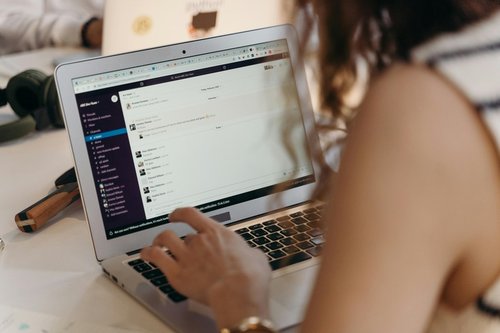How do Slack Shared Channels work?
Shared channels in Slack make cross-company collaboration seamless — but managing them can get messy. Chronicle brings clarity and control.
June 9, 2025
Shared Channels
An inside look at who controls them — and how Chronicle helps you clean them up.

Shared Slack channels make it easy to collaborate with people outside your company. You can chat, share files, and manage projects without leaving Slack.
However, only the workspace that created the shared channel can archive it. If that person leaves or forgets the channel exists, it sticks around and Slack doesn’t give you a simple way to find out who owns what, who still has access, or whether the channel’s even being used. That’s where Chronicle steps in!
What Is a Shared Slack Channel?
A shared Slack channel links two separate Slack workspaces. It looks and functions like any other channel, with messages, files, apps, emojis - but both teams stay inside their workspaces.
Shared channels are perfect for:
- Long-term clients
- External partners
- Freelancers or vendors
- Agencies and support teams
- Any cross-company collaboration that needs speed and structure
Instead of switching tools or drowning in email, teams stay aligned in one shared space.
Why Slack Shared Channels Become a Problem
Slack makes it easy to start a shared channel, but not to manage one.
Most teams don’t know:
- Who created the channel
- Who can archive it
- Who still has access
- If the channel is still being used
- If sensitive data is still sitting in there
Slack doesn’t alert you when someone who owns the channel leaves your company which can lead to clutter, risk, and compliance issues, especially for larger teams or companies with multiple partners.
Who Can Archive a Shared Slack Channel?
Only the original creator’s workspace can archive a shared channel.
Even if your team uses it daily, you can't shut it down unless you created it. You can leave the channel, but it will still exist, and the other side will retain full access to past messages and files.
This ownership model becomes a significant issue when:
- The creator leaves the company
- No one remembers who created it
- You’ve stopped working with the external team
- Sensitive messages are still visible on the other side
Slack doesn’t offer any way to fix this natively.
How to Tell If a Slack Channel Is Shared
Slack shows a small double-diamond icon (🔗) next to the channel name. This indicates that the channel is shared with at least one external organization. You can also hover over the channel name to view connection details.
But what it won’t tell you:
- Who created it
- Who has permission to archive it
- Whether the channel is still active or abandoned
Chronicle fills in all of that missing context.
How Chronicle Helps You Take Control
Chronicle gives your team the tools Slack doesn’t.
It helps you manage ownership, access, and cleanup, so shared channels don’t become a hidden risk.
Here’s how Chronicle helps:
- Find the original channel creator — Instantly know who can archive the channel
- Track external connections — See exactly which outside teams still have access
- Get notified when creators leave — Avoid orphaned channels before they become a liability
- Flag stale or unused shared channels — Auto-detect inactivity and set cleanup rules
- Reassign ownership — Transfer control to someone else with complete visibility
- Close the loop — Ensure channels are appropriately archived, not just abandoned
With Chronicle, you don’t need to dig through Slack or ping old coworkers. You get clarity and control, all in one dashboard.
Why Shared Channels Should Be Audited Regularly
Shared channels can quickly become a blind spot, especially for IT, legal, or security teams.
Without regular audits, you could have:
- Dozens of unused shared channels are still open
- Ex-employees who created channels are no longer in control
- External vendors who still have read-only access to private files
- Clients who left months ago but still see your shared history
Chronicle allows you to schedule audits, view risk-level reports, and take action before something slips through the cracks.
FAQs
What is a Slack shared channel?
A shared channel lets two different Slack workspaces collaborate in the same channel.
What is Slack Connect?
Slack Connect enables companies to share secure channels. Both sides must approve before a connection is live.
Can you share a Slack channel with another company?
Yes, with Slack Connect. One side invites the other, and both admins must approve.
Can you share a private channel?
Yes, but it requires admin approval on both sides. You may need to convert or recreate the channel first.
Can anyone archive a shared channel?
No. Only the team that created the shared channel can archive it.
What happens when you leave a shared channel?
You lose access, but the channel remains open for the other team unless it is archived.
Does Slack notify you when shared channels go stale?
No. Slack has no built-in alerts or expiration for shared channels. Chronicle provides this visibility.
How do I clean up unused shared channels?
Use Chronicle to track ownership, spot inactivity, and assign expiration rules or archive permissions.